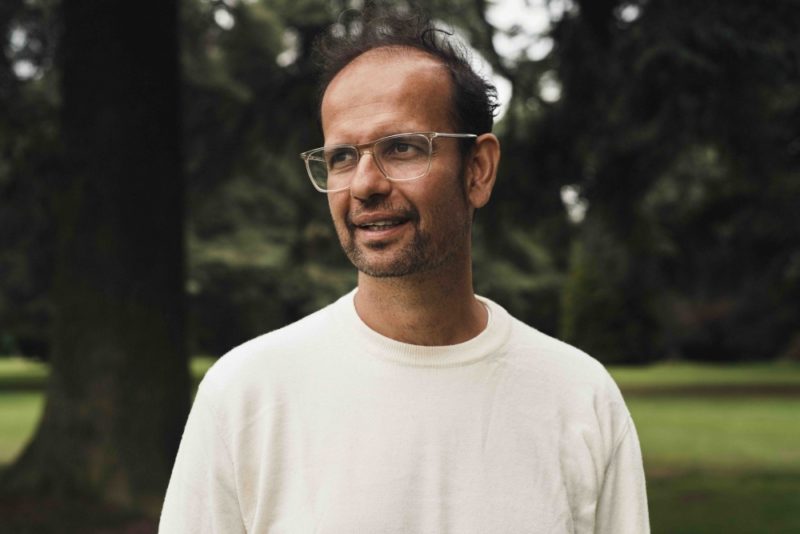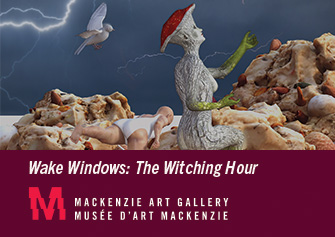Tino Sehgal: Honouring the Affect
21 February 2023By Maxine Proctor

After two years of living almost exclusively behind screens, returning to the public sphere has been daunting and stress-inducing for many people. As someone who already deals with social anxiety, I felt incredibly nervous visiting the Remai Modern knowing that Tino Sehgal’s exhibition featured live art, as well as participatory components. Moving inconspicuously and aimlessly through a museum is not only my preferred method of viewing art, but the freedom of unencumbered exploration is perhaps the motivation behind my love of art more broadly. The thought of awkward conversations with strangers, or the pressure to perform without adequate notice, was terrifying. However, medical experts have noted that most people facing post-lockdown social anxiety are simply out of practice, so I took a deep breath and reframed this experience as much-needed exposure therapy.
Tino Sehgal is an internationally celebrated artist whose ephemeral, live artworks have been executed in major cities around the world for over twenty years. Sehgal is known for his constructed situations that challenge the audience’s roles and expectations within museums, art galleries, and other public institutions. His works are famously undocumented and capturing the situations in any format is strictly prohibited. Sehgal believes that the traditional museum structure only offers audiences passive spectatorship, which is not only limiting but detrimental to the viewer’s perception of how artworks are produced and received. Through live encounters and unexpected situations, Sehgal aims to bring audiences and their personal experiences to the fore, encouraging visitors to interact with the artwork with more intention and humanity.
As I entered the Remai Modern, I was hyper-aware of the other bodies moving around the space, unsure of the distinction between audience members and players in the exhibition. It surprised me how different I felt in the museum space, anxiously wondering if or when I would be invited into a situation. To mitigate the exhibition’s carbon footprint and provide economic opportunities to the community, Sehgal employs local residents to enact his work. This procedure also reinforces a veneer of familiarity. Incorporating locals ensures that each situation is reflective of the community in which it is exhibited and more easily integrates the museum’s visitorship.
The three works presented at the Remai Modern, Yet untitled (2013), This Situation (solo) (2007), and This Success/This Failure (2007), showcase the breadth of Sehgal’s practice and capacity to suspend the museum’s customary viewing experience in favour of immersive and often participatory situations. In lieu of the large vinyl signage and didactic brochures that regularly welcome visitors to the museum, the exhibition opens instead with a parade of modern sculptures, chosen by Sehgal from Remai’s collection, that gently lead visitors into and around the main floor gallery space. The sculptures are anthropomorphous in nature, and are constructed from organic materials such as soapstone, limestone, and marble. Each object embodies a duality: predator and prey, human and animal, mother and child, mirroring the performative exchange between the dancers at the center of the gallery. The path of sculptures, each placed on pedestals of varying heights, wraps around the entangled bodies performing Yet untitled. The small group of two or three dancers, depending on when you visit the gallery, weave voice and body in a harmonious display of human unification.
Ten local dancers were trained by Sehgal’s team to enact the work, which requires intense concentration and endurance. Mid-way through the exhibition’s run, dancer Tatum Wildeman reflected on the experience for Remai’s Instagram: “For me, the beauty of this project is hearing another create sound while I simultaneously create movement in the moment. The exchange provides an unexpected interconnectedness between myself and the other interpreters. This unique combination of sound and movement between two interpreters creates the space to sink into a meditative state.”1 Throughout the performance, one dancer seems to be leading a call and response while the other performers interpret and navigate the flow, the prolonged passing of reverberations felt reminiscent of spiritual chanting or free jazz.
On the second floor of the Remai, This Situation (solo) is enacted by a single alternating interpreter who floats throughout the space eager to engage visitors in conversation. This Situation (solo) aims to build interpersonal connection through the discussion of a historical musing. Eight Saskatoon locals were hired to fill this role, each memorizing hundreds of philosophical quotes to captivate visitors. They were also trained to speak and actively listen to the public while incorporating movement and other more subtle modes of communication. The first interpreter I encountered, on a busy Sunday afternoon, was theatrical and upbeat, keen to impart his wisdom upon me. He confidently shared a quote from a seminal politician whose name I have long forgotten, but once he noticed the terror in my eyes, he just as quickly disengaged and moved his attention to another museum-goer. On my second visit I was not only hopeful I would be offered a different interpreter, but was also equipped with the motivation of a writing deadline. Luckily, I was gently greeted by a woman who had seemingly chosen her quote based on our potential for a meaningful conversation. She shared a timely musing about the invention of the birth control pill and its societal impact. Although the details of our exchange are too personal for publication, it was a reminder of the interconnectivity of the human experience, and I left the encounter with a warm heart.
In a third floor gallery, a large group of children played uninhibited without any toys or adult guidance. The walls, patinated with scuff marks from the constant scraping and bouncing of elbows and knees, showcased the spirit of the unfettered imagination. As I approached the entrance, a young girl stopped playing and ran up to me. Though short of breath, she confidently told me that they were enacting the work This Success/This Failure and asked if I wanted to play with them. Taken aback by the offer to participate in a game seemingly reminiscent of tag, I declined and she quickly assured me that most adults just watch, before running back to her teammates.
For the full duration of Sehgal’s exhibition, nearly three months, children could be found playing in the third floor exhibition space during gallery hours. To carry out an installation of this magnitude, 650 child participants were enrolled in a free art camp at the Remai. While the children took breaks from learning, they were ushered to play or relax in the exhibition space. This Success/This Failure focuses on the human capacity to interact and make connections without objects, which, as curator Troy Gronsdahl points out, offers myriad opportunities and outcomes in relation to the country and culture in which it is enacted.2 In Canada, for example, we would never let children play without being accompanied by a trusted adult. Offering the children the illusion of freedom without hindering their self-expression or safety was at the forefront of the installation’s guidelines and design.
What I thought would be a frightening confrontation was a thoughtful meditation on the capacity of humans. Sehgal embodies this observation not only through his ability to connect individuals, but also through a dedication to sustainability. Sehgal’s exhibitions do not include physical artworks that require global shipping; single-use installation materials such as paint, vinyl, or drywall; unnecessary air travel; or the printing of exhibition catalogues. His investment in the local community is extraordinary, offering paid opportunities for local artists, dancers, academics, and curious members of the public to hone their talents, as well as a free day camp for hundreds of Saskatoon’s children. In a world of passive observation and compulsive documentation, Sehgal challenges audiences to be responsible for their own experiences and to consciously engage with the world around them.
- Remai Modern (@remaimodern). 2022. Instagram, August 14, 2022. https://www.instagram.com/p/ChPoEU7uvP4/
- Troy Gronsdahl, in conversation with the author, July 25, 2022.
Tino Sehgal’s exhibition ran from July 16 – September 4, 2022, at the Remai Modern in Saskatoon, SK.
Feature Image: Tino Sehgal in the grounds at Blenheim. Photo by Edd Horder courtesy of Blenheim Art Foundation and Remai Modern.



